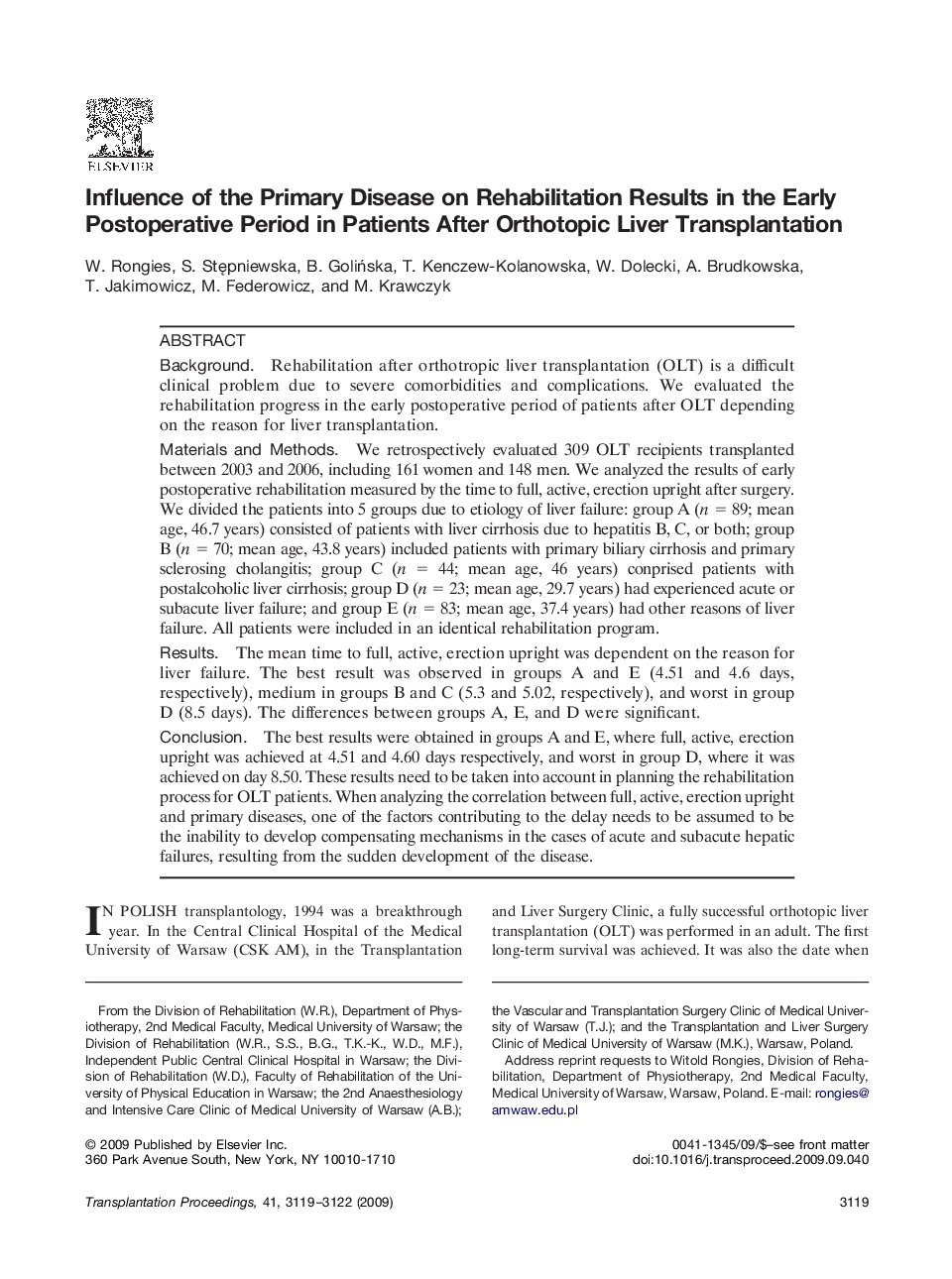| Article ID | Journal | Published Year | Pages | File Type |
|---|---|---|---|---|
| 4259003 | Transplantation Proceedings | 2009 | 4 Pages |
BackgroundRehabilitation after orthotropic liver transplantation (OLT) is a difficult clinical problem due to severe comorbidities and complications. We evaluated the rehabilitation progress in the early postoperative period of patients after OLT depending on the reason for liver transplantation.Materials and MethodsWe retrospectively evaluated 309 OLT recipients transplanted between 2003 and 2006, including 161 women and 148 men. We analyzed the results of early postoperative rehabilitation measured by the time to full, active, erection upright after surgery. We divided the patients into 5 groups due to etiology of liver failure: group A (n = 89; mean age, 46.7 years) consisted of patients with liver cirrhosis due to hepatitis B, C, or both; group B (n = 70; mean age, 43.8 years) included patients with primary biliary cirrhosis and primary sclerosing cholangitis; group C (n = 44; mean age, 46 years) conprised patients with postalcoholic liver cirrhosis; group D (n = 23; mean age, 29.7 years) had experienced acute or subacute liver failure; and group E (n = 83; mean age, 37.4 years) had other reasons of liver failure. All patients were included in an identical rehabilitation program.ResultsThe mean time to full, active, erection upright was dependent on the reason for liver failure. The best result was observed in groups A and E (4.51 and 4.6 days, respectively), medium in groups B and C (5.3 and 5.02, respectively), and worst in group D (8.5 days). The differences between groups A, E, and D were significant.ConclusionThe best results were obtained in groups A and E, where full, active, erection upright was achieved at 4.51 and 4.60 days respectively, and worst in group D, where it was achieved on day 8.50. These results need to be taken into account in planning the rehabilitation process for OLT patients. When analyzing the correlation between full, active, erection upright and primary diseases, one of the factors contributing to the delay needs to be assumed to be the inability to develop compensating mechanisms in the cases of acute and subacute hepatic failures, resulting from the sudden development of the disease.
